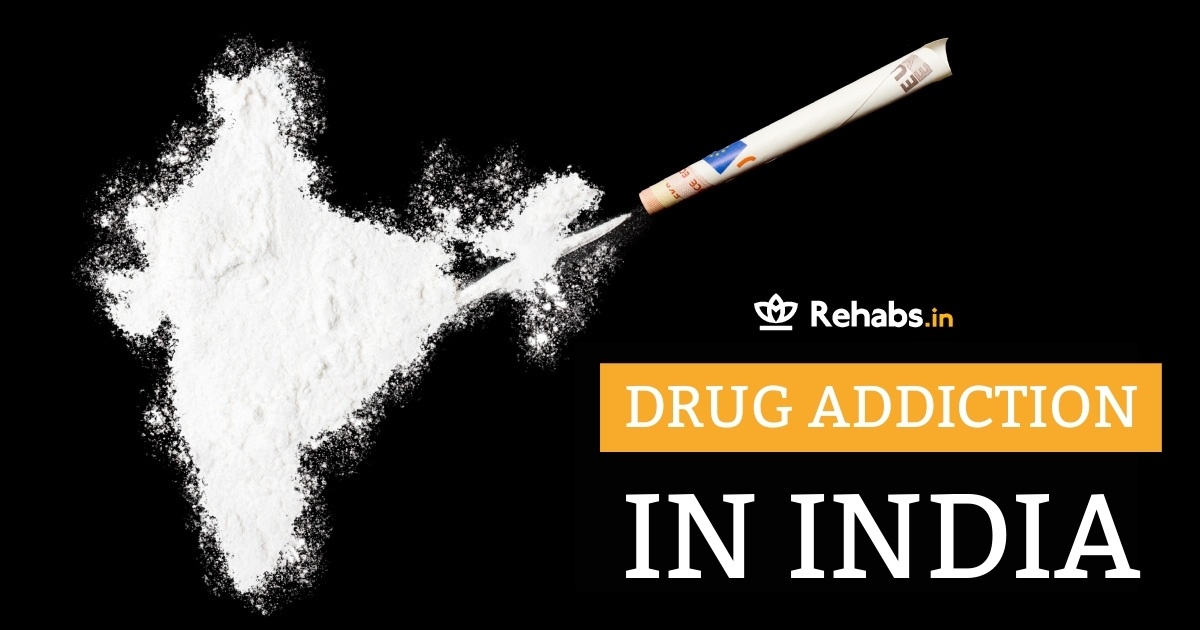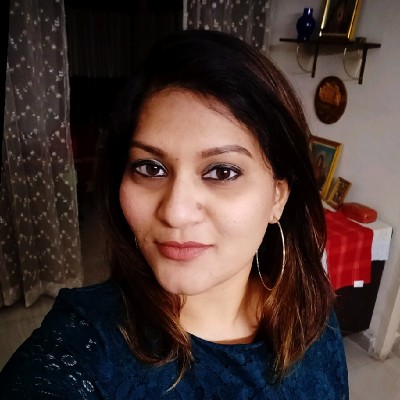Drug Addiction in India — A Rising Problem

The following blog has been reviewed by a Psychologist. If you are reading the blog on a mobile phone, you can see the reviewer’s profile at the end of the blog. Please see our editorial policy here.
National Anti-Drug Addiction Day is celebrated on October 2 every year. This is a special date because it is also the birth anniversary of Mahatma Gandhi. He staunchly opposed drugs and their consumption, so much so that his birth state, ‘Gujarat’ is a dry state where alcohol (also a type of drug) is completely banned. However, it is crystal clear that it will take more than just a dedicated day in a year to solve the rampant rise of drug addiction in India.
Historically, the use of drugs like Opium, Ganja (Cannabis) and Charas (Marijuana, Cannabis Resin) were quite commonplace until the Indian Government enacted the Narcotics Drugs and Psychotropic Substances Act in 1985 criminalizing the use of cannabis in India. That said, drugs like Bhaang (an edible paste made from the buds, leaves, and flowers of the female Cannabis plant with psychoactive properties), Ganja and Charas are still legally available in some parts of the country and roughly 5 million Indians abuse it. However, it is not just these drugs that are being abused, there is a rise in the consumption of hard drugs like heroin and LSD.
Who Is A Drug Addict?
Before we dive deeper into this issue of drug addiction in India, we need to clear the terms between drug abuse and drug addiction. Someone who consumes illegal drugs is a drug abuser but not necessarily an addict. A drug addict is someone who is dependent on drugs and will try every possible resource to abuse drugs. A drug addict is also someone whose quality of life is now severely hindered and may need immediate medical assistance and psychosocial rehabilitation to recover and lead a normal healthy life.
[Read more — A Comprehensive Guide on Drug Addiction (Causes, Types, Symptoms, Prevention, Treatment, etc.)]
The National Survey on Extent and Pattern for Substance Use in India
With the rising number of addicts in the country, India needed a plan on how to contain this problem. This could only be done with the help of a detailed study on the kinds of drugs being abused, the age-group of addicts, the states with the highest consumptions and the availability of de-addiction centres.
The Ministry of Social Justice and Empowerment, Government of India joined hands with the National Drug Dependence Treatment Centre (NDDTC) and All India Institute of Medical Sciences (AIIMS), New Delhi. In collaboration with 10 medical institutes and 15 NGOs, they conducted the survey in all the 28 states and 8 union territories of India. It was a massive effort with over 1,500 personnel involved in collecting crucial data between the period of December 2017 and October 2018.
Key Findings of the National Survey
- Cannabis and opioids are the most extensively used drugs after alcohol
- Roughly 2.8% of Indians claim to have used some form of cannabis products
- About 2.1% of the country’s population uses opioids
- 1.14% of the population abuse heroin
- 0.96% of the population abuse pharmaceutical opioids
- 0.52% of the population abuse opium
- 1.08% of the population abuse sedatives (nonmedical, non-prescription use)
- 0.7% of the population abuse Inhalants
- 0.10% of the population abuse Cocaine
- 0.18% of the population abuse Amphetamine type stimulants
- 0.12% of the population abuse Hallucinogens
States With The Highest Use Of Drugs
Although the entire country is facing a drug addiction menace some states are more impacted than the rest. According to the AIIMS report, over half of the opioid abusers in India come from the states of Delhi, Maharashtra, UP, Punjab, Haryana, Rajasthan and Andhra Pradesh. Sikkim, Arunachal Pradesh, Nagaland, Manipur and Mizoram too have the highest prevalence of opioid use. Similarly, Uttar Pradesh, Punjab, Sikkim, Chhattisgarh and Delhi have the highest percentage of cannabis addicts. However, Uttar Pradesh, Maharashtra, Punjab, Andhra Pradesh and Gujarat are also the top five states which have the largest populations of people using sedatives. The report proves that the drug abuse problem is quite rampant in the North and North East of India and Maharashtra.
The Population Most Affected By Drug Addiction Problems
Almost a decade ago, the United Nations conducted a survey about drug use in India. The report highlighted that most Indians had their first interaction with drugs while they were still young (below fifteen years), especially for drugs like Cannabis and Alcohol. The mean age of drug abusers was around thirty-five, and almost 95% of them were males. The Magnitude of Substance Abuse (2019) survey reveals that now the county has drug addicts as young as ten and as old as seventy-five. Also, the number of female drug addicts are also on a rise. With India being a nation of youths, these numbers are truly worrisome.
Physical and Mental Effects of Drug Addiction on Drug Addicts
If a drug addict is of very young age then the addict may have developmental issues like hormonal imbalances which may cause sexual dysfunction and fertility problems later on. Addicts may also likely suffer from high blood pressure and cholesterol, have poor immunity and may also be at high risk for heart problems and liver disease. The psychological and social effects of drug addiction are often cyclical and problematic. Many addicts turn to drugs to cope with depression and stress and it is these very drugs that lead to severe depression and anxiety. Many go through a phase of extreme mood disorders and become introverts by personality. If an addict is hard-pressed for money to buy drugs, then they may also resort to begging, borrowing and more often than not stealing.
The Way Forward For Drug Addicts In India
The National Survey on Extent and Pattern for Substance Use in India makes it quite clear that a sizable population is addicted to drugs. However, there is a large gap between the demand for treatment and treatment services available. A national-level treatment programme is the need of the hour. Moreover, we need more government-aided de-addiction centres for inpatient treatment as well as outpatient clinics with proper access to medicines, doctors and psychiatrists. Time and again, it is proven that prevention is better than cure. Prevention programmes about drug abuse need to be carried out in schools, colleges, housing societies, family clinics and hospitals. The focus should not be just on saying ‘No to drugs’, but also on how to stay healthy both in mind and body. How to deal with stress and disappointments and how to become productive members of society.
India has a long and difficult path ahead of itself, but with the right planning and resource allocation, things can get better.
Sources
https://qz.com/india/1902020/how-did-weed-hash-become-illegal-in-india-but-not-bhaang/
https://www.drugabuse.gov/drug-topics/health-consequences-drug-misuse/mental-health-effects
http://www.ndusindia.in/downloads/Magnitude_India_EXEUCTIVE_SUMMARY.pdf













